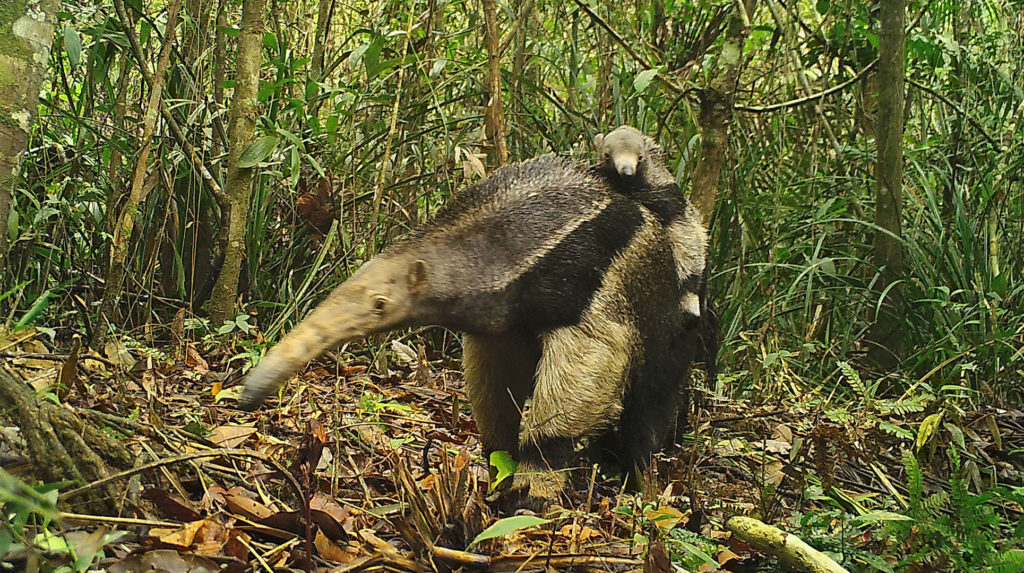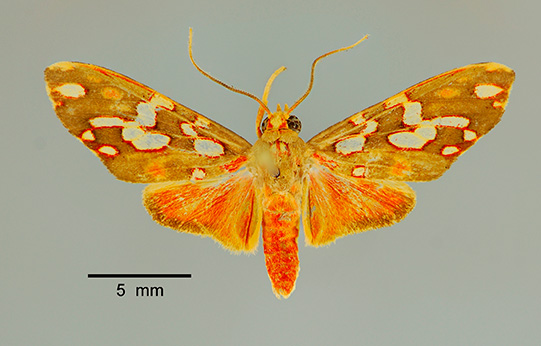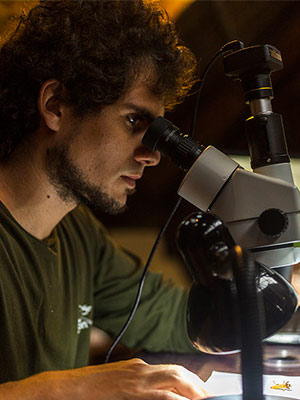We’re now offering a fun, interactive activity in the heart of the Amazon Rainforest! The new “Open Lab” is available at our stunning Refugio Amazonas lodge in Tambopata, Peru to make science happen with all our guests.
 Refugio Amazonas Lodge has the second floor in the main area with a perfect view of the forest. The beautiful lodge also features nightly presentations on the fascinating creatures of the jungle, and two tranquil massage rooms — still leaving enough space for our Open Lab!
Refugio Amazonas Lodge has the second floor in the main area with a perfect view of the forest. The beautiful lodge also features nightly presentations on the fascinating creatures of the jungle, and two tranquil massage rooms — still leaving enough space for our Open Lab!
Open Lab is an entomology lab in the middle of the Amazon jungle. We have a great stereoscope that projects the microscopic anatomy of insects in real-time. The lab is equipped with tweezers, pins, petri dishes, and everything you need to get access to small insect structures.
But before going into more detail about the Open Lab, let me tell you more generally about the incredible science project we’ve started at Refugio Amazonas. The Lab is just one part of this amazing initiative! At the lodge, we’ve begun a Citizen Science program called Wired Amazon. This unique program has three main components that make science happen with exciting and accessible tools.
The first part of our Citizen Science Program is the AmazonCam Tambopata. We’re using camera traps to figure out how many jaguars live in the Tambopata National Reserve. We have more than 150 cameras in a 200 square kilometer area called “The Big Grid.”
 Giant Anteater - Mother and baby
Giant Anteater - Mother and baby
We also started an Aerobotany project, complete with drones, as part of the Citizen Science Program! Guests can help with the project and even learn about drone science in the process. We’re located in the buffer zone of the Tambopata National Reserve, with more than 162 natural Brazil Nut trees growing on the land. So we’re using these drones to see what’s going on in the crowns of the majestic Brazil Nut Trees, known in Spanish as Castañas.

Brazil Nuts Trees
Finally, we have our groundbreaking Discovering New Species project, conducted with the help of lodge guests. We’re trying to discover new species of insects — and that’s where our new Open Lab comes in!
1,013,000 insect species have already been discovered around the world. While this number may seem gigantic, some scientists believe that there are actually six to eight million insect species globally, meaning most types haven’t been discovered yet! Nowadays, we don’t have enough specialists in different insect types to research all of them. Also, there are lots of inaccessible places with plenty of new species just waiting to be discovered! This means that there’s a huge gap in scientific knowledge, and tons of chances to discover new species!

Paranerita maculata sandeepani-Grados,-MS Disciver by a guest of Refugio Amazonas Lodge
Here at our Refugio Amazonas lodge, we focus on four groups: scorpion wasps, treehoppers, leafhoppers, and tiger moths. We use several different techniques to collect our samples. For tiger moths, we make a very simple light trap: a white sheet with a bright light in front of it, since light easily attracts moths.
For the other three groups, we use Malaise Traps and Yellow Buckets. Malaise Traps are similar to tents, drawing insects into a jar with alcohol inside. Yellow Buckets, on the other hand, are containers filled with water and soap. The yellow color attracts insects’ attention, leading the way to the water. With these two strategies, we collect a huge community of insects, especially the coveted Scorpion Wasps, Tree Hoppers, and Leaf Hoppers.
This is a perfect opportunity to involve everyone in the scientific process. Our lodge guests help us sort insects and classify the information, and at the same time, they receive a private insect class! We also provide previous samples to show off the anatomy and uniqueness of different groups of insects.
Finally, there’s the Open Lab. With our high tech equipment, we can view the exquisite patterns on the wings of Scorpion Wasps, the filaments of Leaf Hopper legs, even the scales on the wings of the tiger moths — all with incredible edible detail. We classify all our samples there and invite everyone to help and learn. We encourage anyone interested to join us in a fun private class and just make science happen.

Learn more about insects. Come and visit us at our Light Trap and Open Lab!